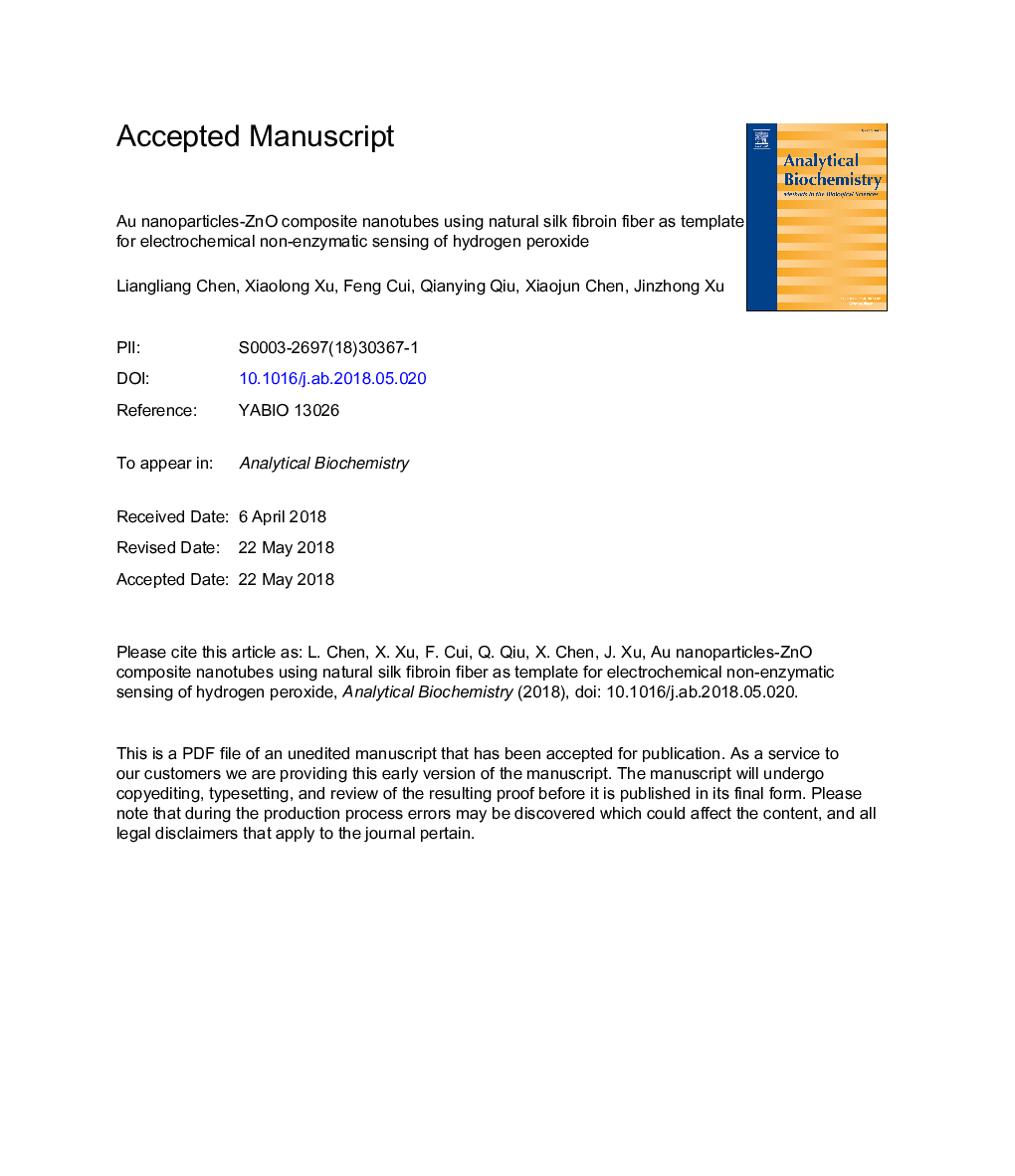| Article ID | Journal | Published Year | Pages | File Type |
|---|---|---|---|---|
| 7556678 | Analytical Biochemistry | 2018 | 17 Pages |
Abstract
A novel electrochemical sensor based on the composite of gold nanoparticles/zinc oxide nanotube (AuNPs/ZnO-NTs) was constructed and its application as hydrogen peroxide (H2O2) non-enzymatic sensor was investigated. ZnO-NTs were prepared by a biomineralization strategy in which silk fibroin fiber (SFF) was used as template, and thus the ZnO-NTs inherited the advantages of SFF such as mechanical stability, flexible biomimetic morphology and biocompatibility. The AuNPs/ZnO-NTs was further prepared by the electrostatic absorption of AuNPs onto the surface of ZnO-NTs, and found to be capable to catalyze the reduction of H2O2. The working potential was 0.05â¯V, which was far higher than those in literatures, indicating the strong anti-interference ability in the real application. The catalytic current was linearly proportional in the concentration range of 1 μM-3.0â¯mM with a sensitivity of 1336.7â¯Î¼Aâ¯mMâ1â¯cmâ2. The detection limit was estimated to be 0.1â¯Î¼Mâ¯(S/Nâ¯=â¯3). Such a high sensitivity was attributed to the electrocatalytic property of ZnO and high electron transfer ability of AuNPs/ZnO-NTs structure. Moreover, the final detection results of H2O2 in real samples showed the acceptable accuracy compared with the traditional potassium permanganate titration, exhibiting the prospect to be used as an applicable sensor in actual detections.
Related Topics
Physical Sciences and Engineering
Chemistry
Analytical Chemistry
Authors
Liangliang Chen, Xiaolong Xu, Feng Cui, Qianying Qiu, Xiaojun Chen, Jinzhong Xu,
